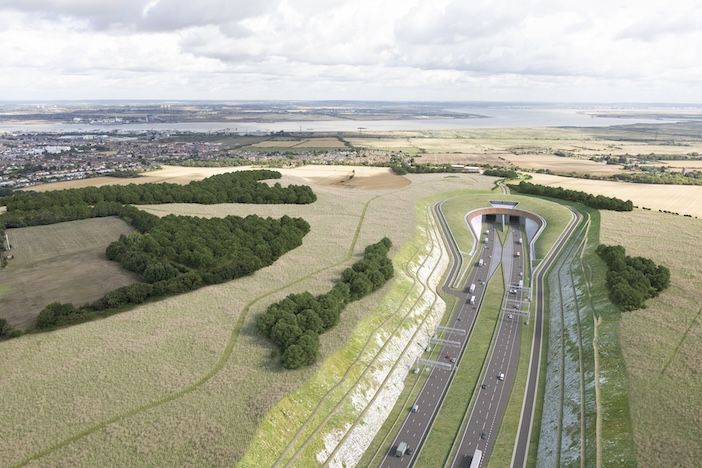Nationwide Highways UK’s Decrease Thames Crossing mission will make historical past as the primary main UK infrastructure mission to utterly remove diesel from its building websites by 2027, by way of an unprecedented dedication to electrical autos and hydrogen-powered heavy equipment. The award of the contract for hydrogen provide is anticipated later this 12 months, marking a milestone for OEMs within the building business.
This method to zero-emission building is a part of a brand new goal introduced by Nationwide Highways UK on 4 February to scale back building carbon emissions by 70% – making it the greenest highway ever constructed within the UK.
“The Decrease Thames Crossing won’t solely sort out congestion and unlock financial progress within the UK, with our companions and suppliers we’ll create a brand new blueprint for the way we construct low-carbon infrastructure,” says Katharina Ferguson, provide chain growth director, Decrease Thames Crossing.
The mission’s dedication to zero-emission equipment represents a serious alternative for OEMs growing electrical and hydrogen-powered building gear. By working carefully with its three supply companions and provide chain, the mission has already halved its predicted building carbon footprint, turning into the primary main mission within the UK to make it a legally binding restrict in its October 2022 Improvement Consent utility.
The mission crew goals to realize its goal whole carbon footprint of lower than 840,000 tonnes by way of a complete technique that may utterly remove diesel from building websites by 2027. This will likely be achieved by way of the large-scale deployment of electrical autos and building plant, alongside pioneering use of hydrogen energy for heavy building equipment. The technique additionally consists of the unique use of low-carbon metal and concrete, whereas taking a forensic method to carbon discount in highway design refinement.

The Decrease Thames Crossing is designed to sort out congestion and unlock financial progress by virtually doubling highway capability throughout the Thames east of London. The mission’s carbon pathfinder standing is already setting new requirements for constructing infrastructure by pioneering and scaling up approaches to low-carbon building.
The mission’s deal with sustainable building extends to its broader environmental initiatives. Somewhat than constructing a bridge, the crossing will make the most of a tunnel to guard wetlands and marshes, and embrace seven inexperienced bridges for wildlife and group use. Moreover, the mission commits to planting a minimum of 1 million timber and creating new group woodlands and public parks.
Building readiness is already effectively superior, with the mission crew ready to start work pending authorities approval. The Secretary of State for Transport has prolonged the deadline for a choice on the planning utility to 23 Could 2025, with building anticipated to take six years topic to planning permission and funding.
The mission has already achieved vital progress throughout a number of fronts. Detailed design work is actively advancing to optimize and scale back native impacts. The implementation of a £250,000 Neighborhood Fund has already benefited 55 native organisations, whereas the launch of a Expertise Hub pilot programme helps develop native experience. In the meantime, the Gap Farm group woodland mission is making substantial progress, with 80,000 timber already planted utilizing low-carbon building strategies.


